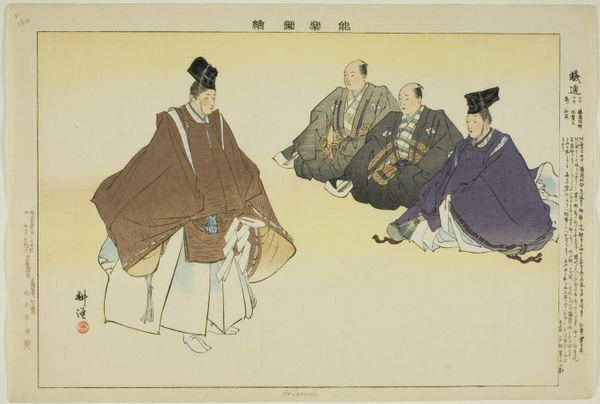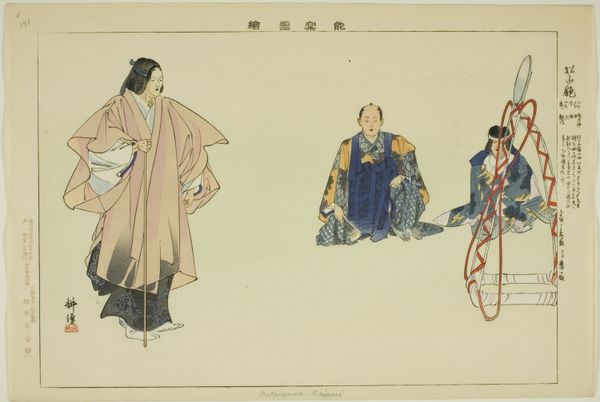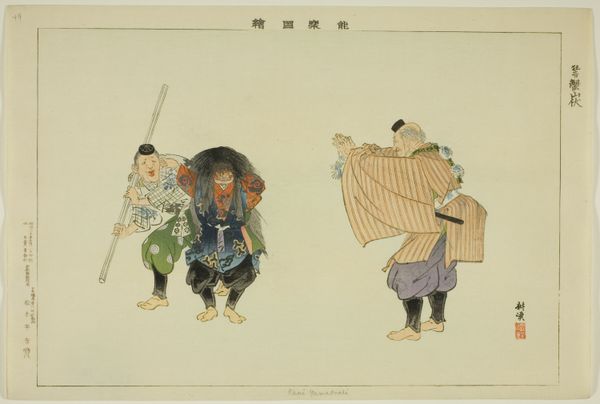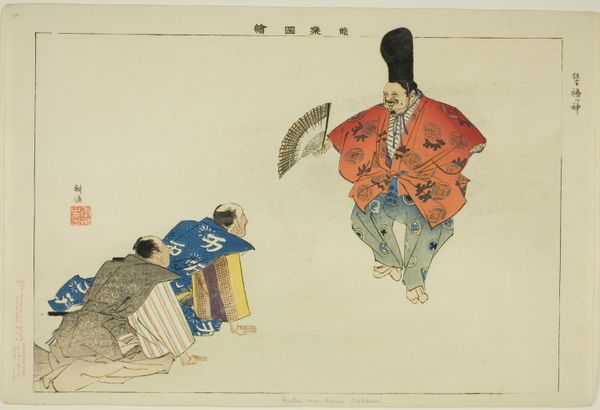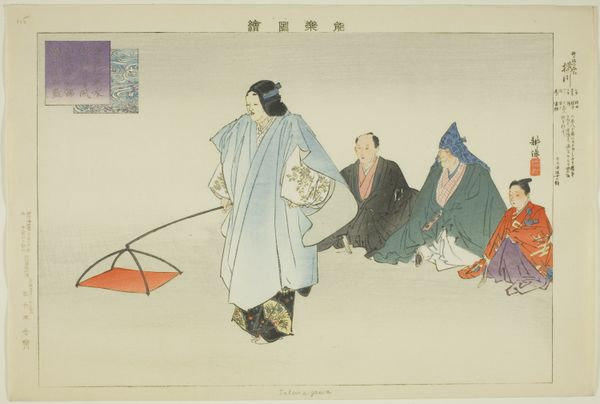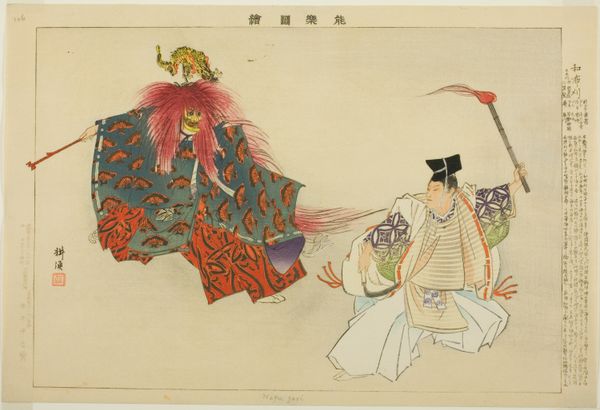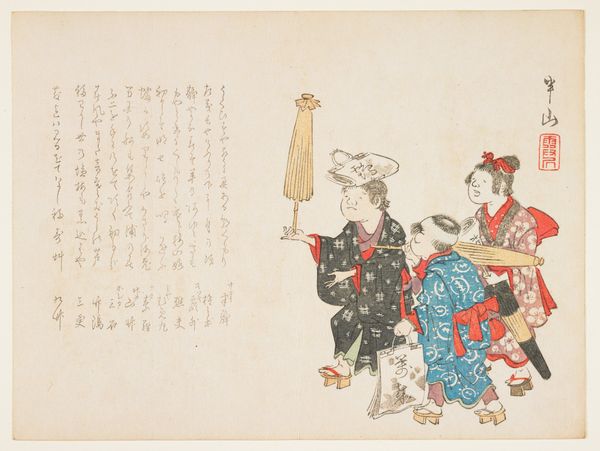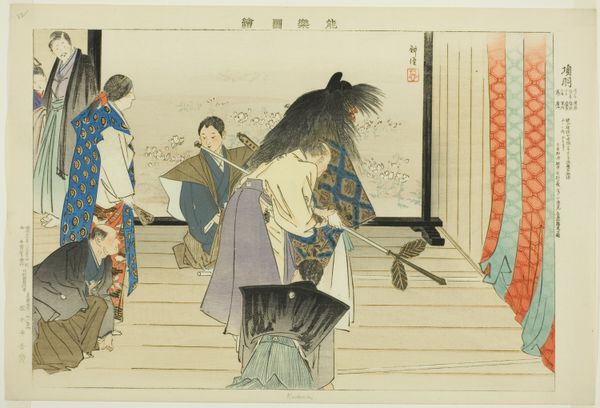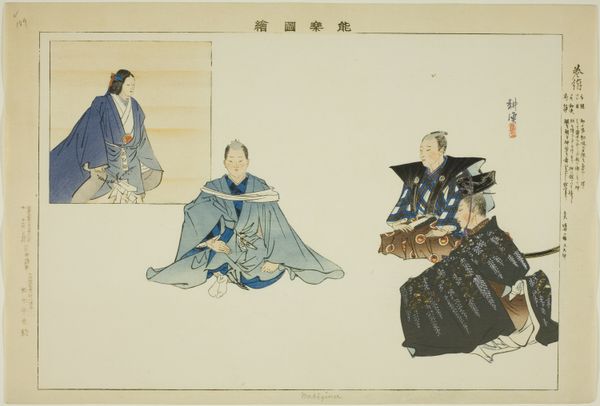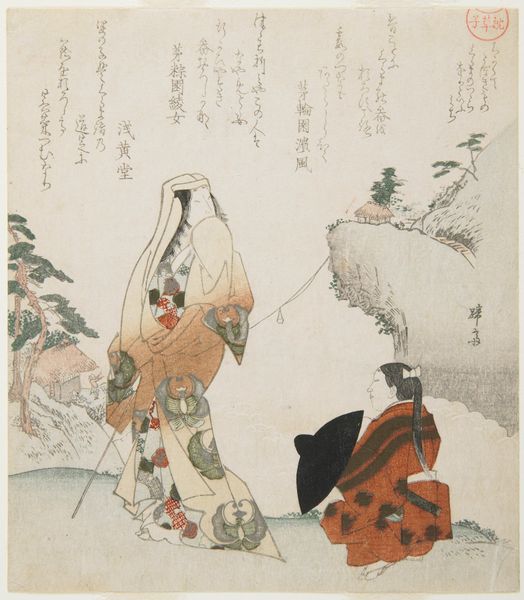
Kanaoka (Kyogen), from the series "Pictures of No Performances (Nogaku Zue)" 1898
0:00
0:00
Dimensions: Approx. 25.2 × 37.4 cm (10 × 14 4/3 in.)
Copyright: Public Domain
Curator: The vibrant colors of this print immediately catch the eye! There’s such a sense of theatricality and emotion. Editor: Indeed. Here we have "Kanaoka (Kyogen), from the series "Pictures of No Performances (Nogaku Zue)" by Tsukioka Kogyo, produced around 1898. As the title indicates, the artwork portrays a scene from a Kyogen play. Curator: What fascinates me is the execution of the woodblock print—the lines are incredibly precise, and the composition, though minimal, conveys the story clearly. Look at how the two figures are positioned. There is an implied narrative between them. Editor: From my perspective, I can see how these prints are reflective of Japan’s sociopolitical conditions as it moves into the Meiji era. Woodblock printing had been a major form of mass communication and popular art since the Edo period, but with Westernization and new technologies, the role and function of these images and the industry and the artists that make them change drastically. Curator: An excellent point. These works provided accessible entertainment and were a form of visual media to explore shifting societal mores. Consider the subject matter itself – an interest in capturing performances, which often held social commentary and satire within them. Editor: Yes, precisely. Note the figures' costumes, hairstyles and subtle makeup – the labor in putting these on, the materials sourced, the workshops that produced all this—all reflecting on how labor and artistry are represented and consumed by different social classes. Curator: Looking back at the purely visual, the contrast between the solid black robes of the figure on the left against the lighter hues of the other figure creates visual interest. The texture and pattern in the garments contribute to the formal qualities of the image. Editor: Considering that Kogyo created this whole series to document different scenes from Noh plays and these are considered Nogaku Zue which also means “Pictures of No Performances”, they're very much made for documenting. The production process and choices reflect the work put into producing artwork which serves many purposes! Curator: So, the print serves not just as documentation but, more impressively, a testament to a dynamic cultural context interpreted through artistic execution. Editor: Precisely; I believe it brings invaluable perspectives into the economic structure supporting the cultural realm, the roles of both artists and consumers within the ecosystem of that time.
Comments
No comments
Be the first to comment and join the conversation on the ultimate creative platform.
